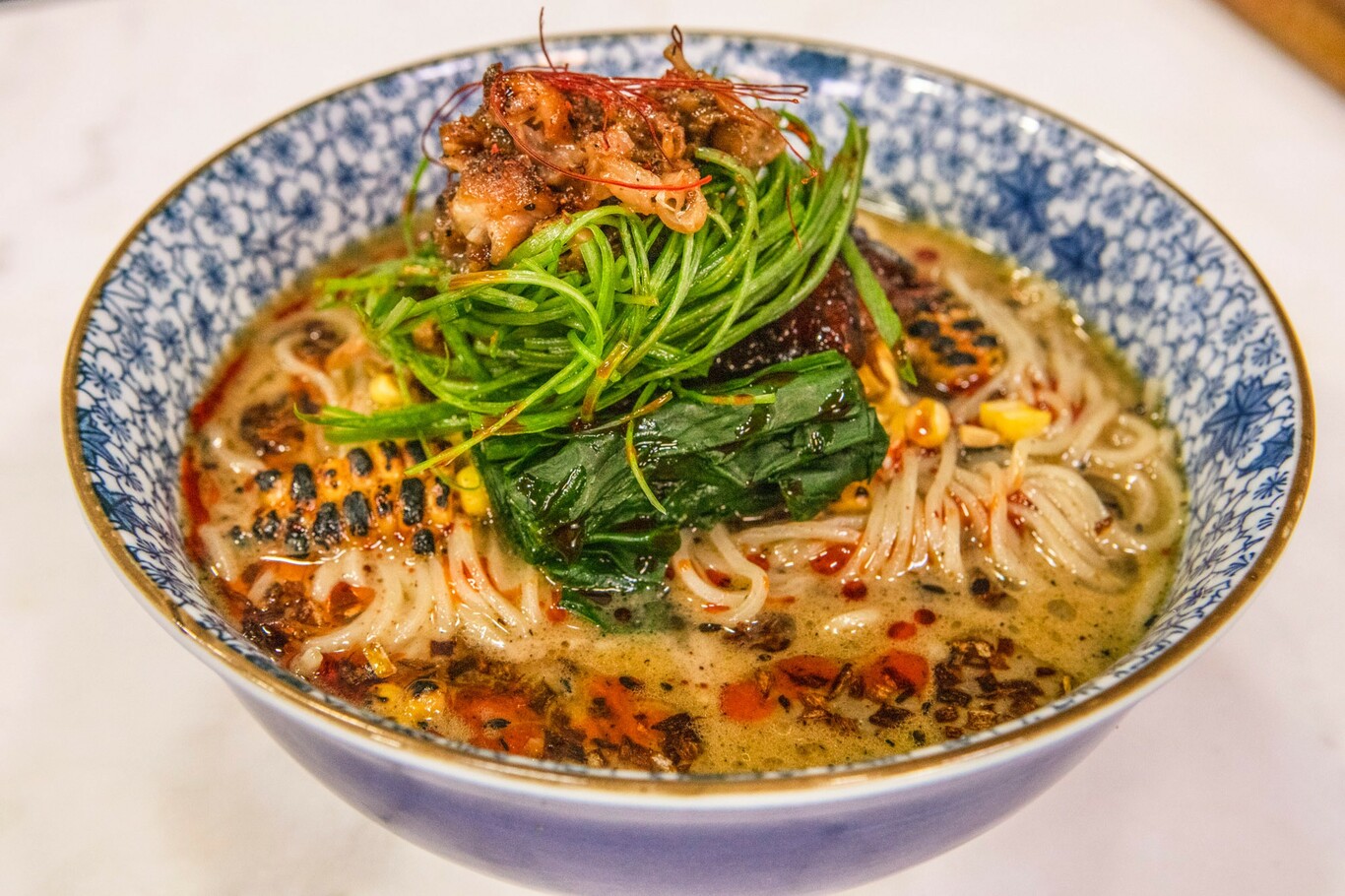In case you missed last week's episode of Chefs at Home, chef and former MasterChef Junior contestant Josh Reisner prepared Golden Assari Chicken Chintan Stock, a rich, long-simmered stock that gets tons of flavor from shiitake mushrooms, charred leek, and ginger. Now, in the remaining two episodes, he's going to use that stock to make two different ramen recipes—Chicken Adobo-Inspired Ramen and Mapo Tofu- and "Wok-Style"-Inspired Ramen. The Chicken Adobo-Inspired Ramen is up first, which incorporates key ingredients from the beloved Filipino dish.
"I was fortunate enough to have been taught by a lot of Filipino chefs and I love Filipino food," Reisner says. "And from what I see, it's all about family, it's all about big plates of food for everyone. Here, I'm just taking the stuff that I've learned from someone else's adobo, and all these different adobos that I've tasted and loved. This is my culmination, making an adobo-inspired ramen."
Between making the stock and braising the chicken, this recipe is definitely an investment in time, but the pay-off is worth it. Keep reading for Reisner's step-by-step method and follow along with the video above.
Prep the Chicken
For the chicken adobo portion of the recipe, Reisner begins by dry-brining the chicken legs in a mixture of kosher salt and granulated sugar. Many people don't dry-brine the chicken first, he notes, but he chose to because he's going to pre-sear the chicken. The brine will dry out the skin, and help it get browned and crispy when it's in the pan.
Get Cooking
Reisner uses onion-infused chicken fat in the video (he includes instructions for making it in the recipe), but you can also skim the chicken fat from the top of the Chintan stock and use it as-is. Either way, add the fat to a large, heavy skillet, heat it until it's shimmering, and then cook the chicken legs in it, skin-side down, until they've turned golden brown. Flip 'em and add the onion next—once that's translucent, the garlic goes in, followed by the fresh ginger a minute or two later.
Next, add the whole spices—lightly crushed green cardamom pods and cumin seeds, plus one clove—to the skillet, as well as the fresh bay leaves and black pepper (don't forget to remove the clove before eating). After a minute, add the light brown sugar. Once it's dissolved, pour in the chicken broth, distilled white vinegar, and soy sauce, and the unsweetened coconut milk if you're using it. Cover the skillet, reduce the heat to medium-low or low, and let the chicken cook for about two hours—until it's ultra-tender.
Meanwhile…
While the chicken cooks, you can prep the scallions and cook the spinach—both will be used as topping for the ramen. You can use the same pot the spinach cooked in to cook the ramen noodles (just fill it with fresh water).
Assemble and Serve
Once the chicken is done, remove the thigh meat from the bone and shred the cartilage and scraps from the leg so you can use them for garnish. To serve the ramen, ladle some adobo sauce from the skillet into four bowls, and then add the Chintan stock next, stirring to blend. After that, add the cooked noodles, picking them up and folding them over a few times to arrange them neatly.
Here's where the pièce de résistance—the chicken—comes in. Add a chicken thigh to each bowl of ramen, along with grilled corn. Top them off with the scallions (formed into a nest), spinach, cartilage, and chile threads if using. With a final drizzle of black pepper infused vinegar, the ramen is ready.
"Oh wow," Reisner says after trying a bowl. "You can literally taste every layer that we put in. Fire."
This article was written by Bridget Hallinan from Food & Wine and was legally licensed through the Industry Dive Content Marketplace. Please direct all licensing questions to legal@industrydive.com.







